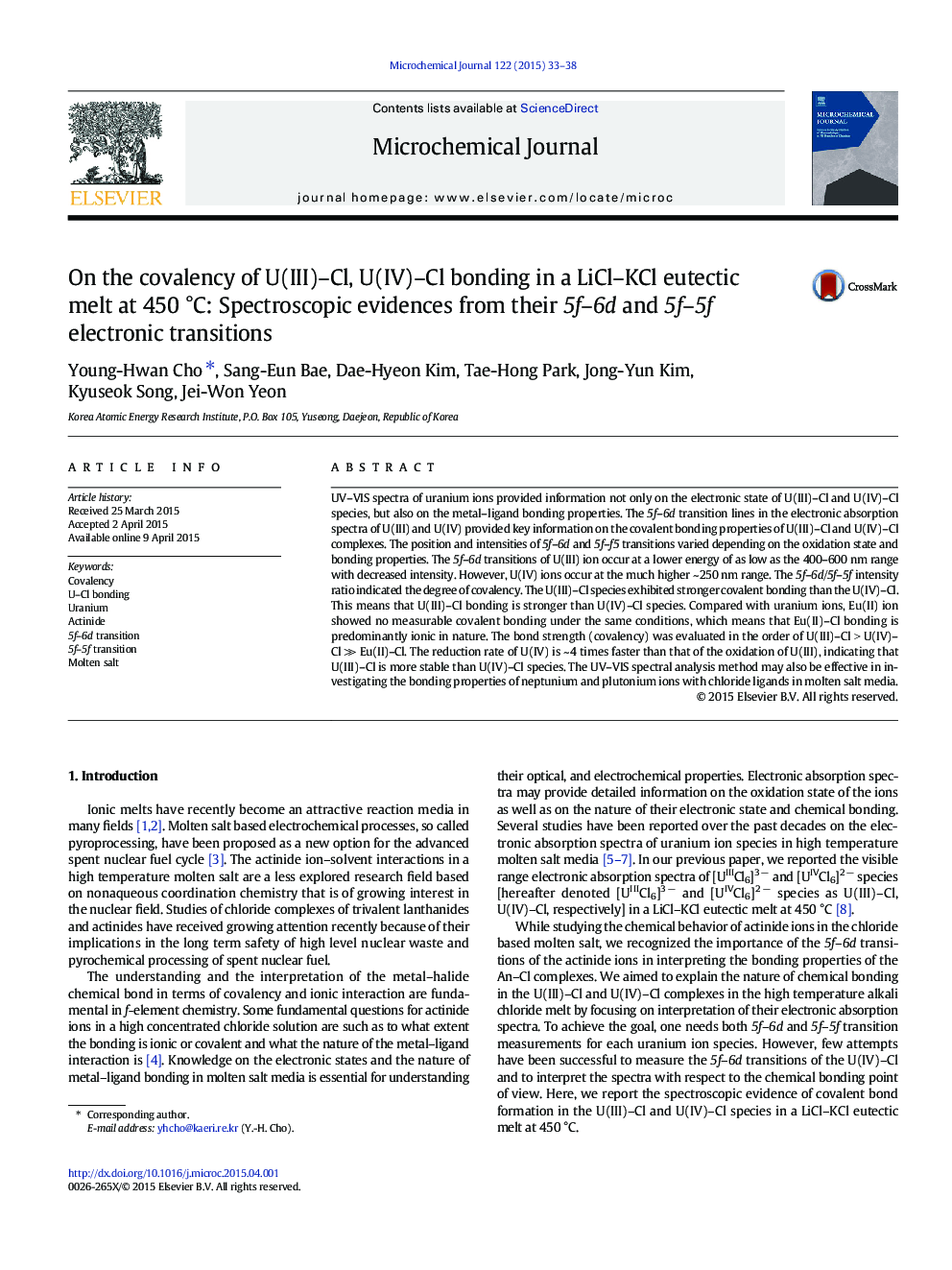| کد مقاله | کد نشریه | سال انتشار | مقاله انگلیسی | نسخه تمام متن |
|---|---|---|---|---|
| 1227756 | 1494872 | 2015 | 6 صفحه PDF | دانلود رایگان |

• The 5f-6d transition lines in the electronic absorption spectra of U(III) and U(IV) provided key information on the covalent bonding properties of U(III)-Cl and U(IV)-Cl complexes
• The 5f-6d/5f-5f intensity ratio indicated the degree of covalency
• The bond strength (covalency) was evaluated in the order of U(III)-Cl > U(IV)-Cl >> Eu(II)-Cl
UV–VIS spectra of uranium ions provided information not only on the electronic state of U(III)–Cl and U(IV)–Cl species, but also on the metal–ligand bonding properties. The 5f–6d transition lines in the electronic absorption spectra of U(III) and U(IV) provided key information on the covalent bonding properties of U(III)–Cl and U(IV)–Cl complexes. The position and intensities of 5f–6d and 5f–f5 transitions varied depending on the oxidation state and bonding properties. The 5f–6d transitions of U(III) ion occur at a lower energy of as low as the 400–600 nm range with decreased intensity. However, U(IV) ions occur at the much higher ~ 250 nm range. The 5f–6d/5f–5f intensity ratio indicated the degree of covalency. The U(III)–Cl species exhibited stronger covalent bonding than the U(IV)–Cl. This means that U(III)–Cl bonding is stronger than U(IV)–Cl species. Compared with uranium ions, Eu(II) ion showed no measurable covalent bonding under the same conditions, which means that Eu(II)–Cl bonding is predominantly ionic in nature. The bond strength (covalency) was evaluated in the order of U(III)–Cl > U(IV)–Cl ≫ Eu(II)–Cl. The reduction rate of U(IV) is ~ 4 times faster than that of the oxidation of U(III), indicating that U(III)–Cl is more stable than U(IV)–Cl species. The UV–VIS spectral analysis method may also be effective in investigating the bonding properties of neptunium and plutonium ions with chloride ligands in molten salt media.
Journal: Microchemical Journal - Volume 122, September 2015, Pages 33–38